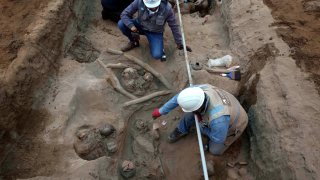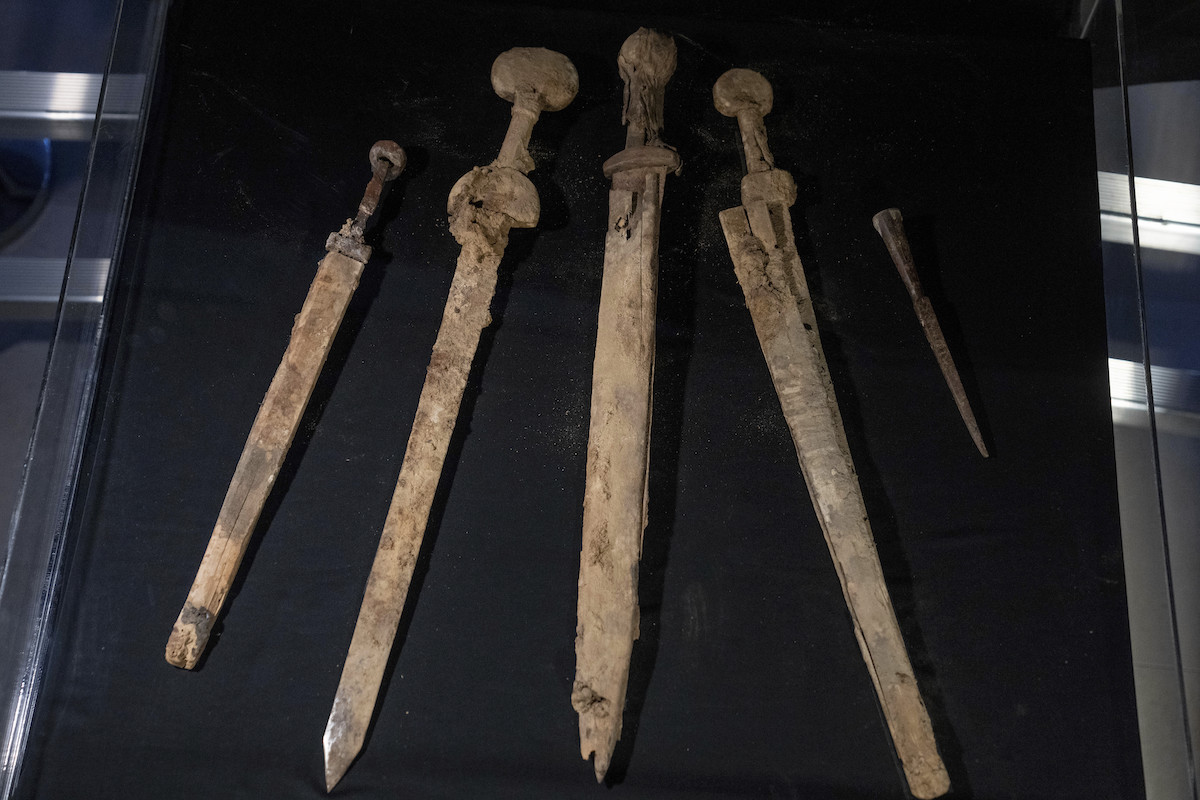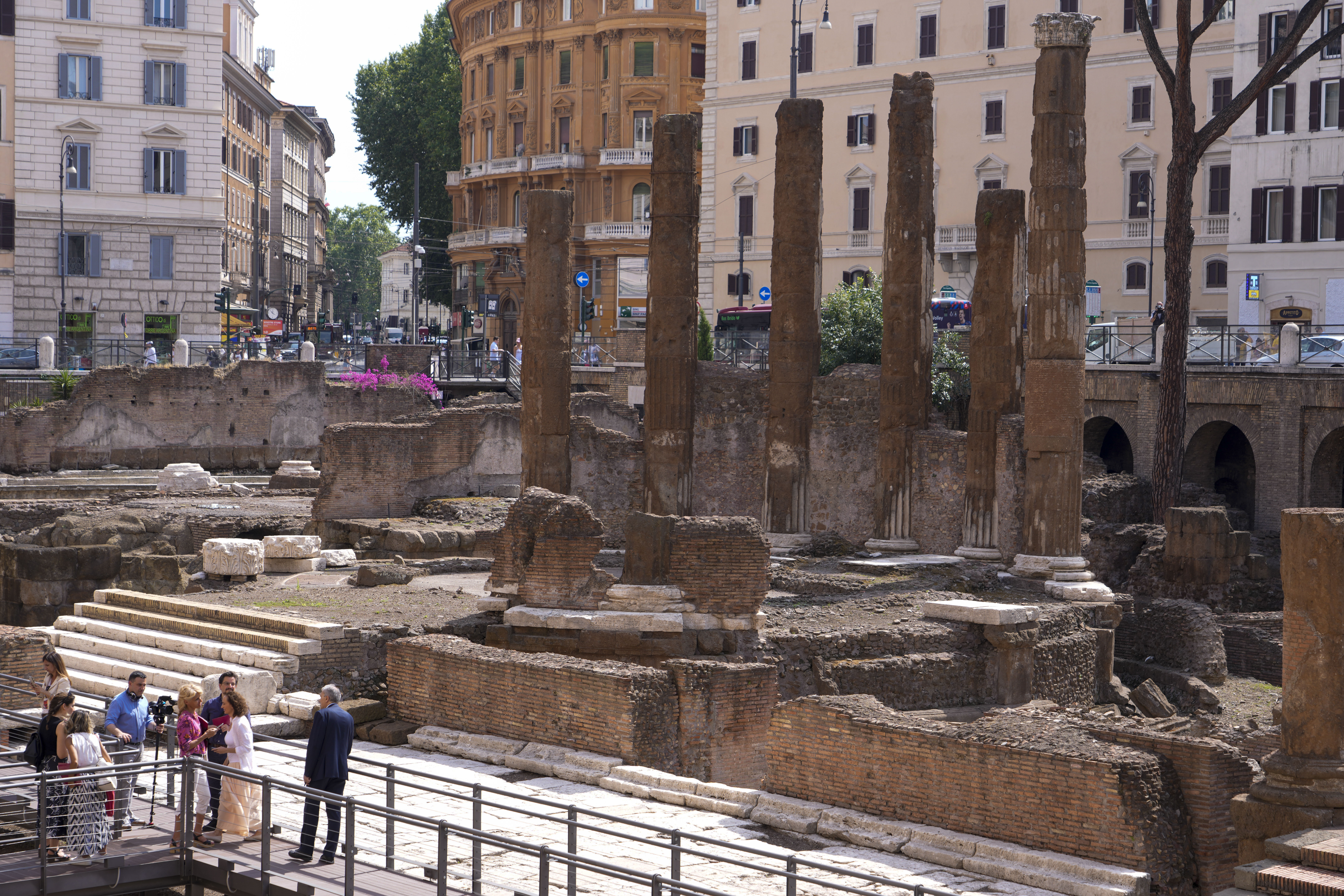
Some archaeologists describe Peru’s capital as an onion with many layers of history, others consider it a box of surprises. That's what some gas line workers got when their digging uncovered eight pre-Inca funeral bales.
“We are recovering those leaves of the lost history of Lima that is just hidden under the tracks and streets,” Jesus Bahamonde, an archaeologist at Calidda, the company that distributes natural gas in the city of 10 million people, said Friday.
He said the company's excavation work to expand its system of gas lines over the last 19 years has produced more than 1,900 archaeological finds of various kinds, including mummies, pottery and textiles. Those have mostly been associated with burial sites on flat ground.
The city also has more than 400 larger archaeological sites that have turned up scattered through the urban landscape. Known as “huacas” in the Indigenous Quechua language, those adobe constructions are on top of hills considered sacred places.
Get Southern California news, weather forecasts and entertainment stories to your inbox. Sign up for NBC LA newsletters.
The number of relics isn't surprising. The area that is now Lima has been occupied for more than 10,000 years by pre-Inca cultures, then the Inca Empire itself and then the colonial culture brought by the Spanish conquerors in 1535.
Bahamonde showed the bales of ancient men sitting, wrapped in cotton cloth and tied with ropes braided from lianas that were in trenches 30 centimeters (nearly a foot) below the surface.
Archaeology
The company’s archaeologists believe the finds belong to the pre-Inca culture called Ichma. The Ichma culture was formed around A.D. 1100 and expanded through the valleys of what is now Lima until it was incorporated into the Inca Empire in the late 15th century, scholars say.
Archaeologist Roberto Quispe, who worked in the trench, said the funeral bundles probably hold two adults and six minors.
Sometimes, the archeological finds prove to be from more recent times. In 2018, Quispe and other archaeologists working in the La Flor neighborhood found wooden coffins holding three Chinese immigrants buried in the 19th century.
Archaeologists found the bodies next to opium-smoking pipes, handmade cigarettes, shoes, Chinese playing cards, a Peruvian silver coin minted in 1898 and a certificate of completion of an employment contract written in Spanish and dated 1875 at a hacienda south of Lima.
The eight burial bundles were found near some braised chicken restaurants and a road that leads to Peru’s only nuclear power station.
“When the Spaniards arrived in the 16th century they found an entire population living in the three valleys that today occupy Lima ... what we have is a kind of historical continuation,” Bahamonde said.



